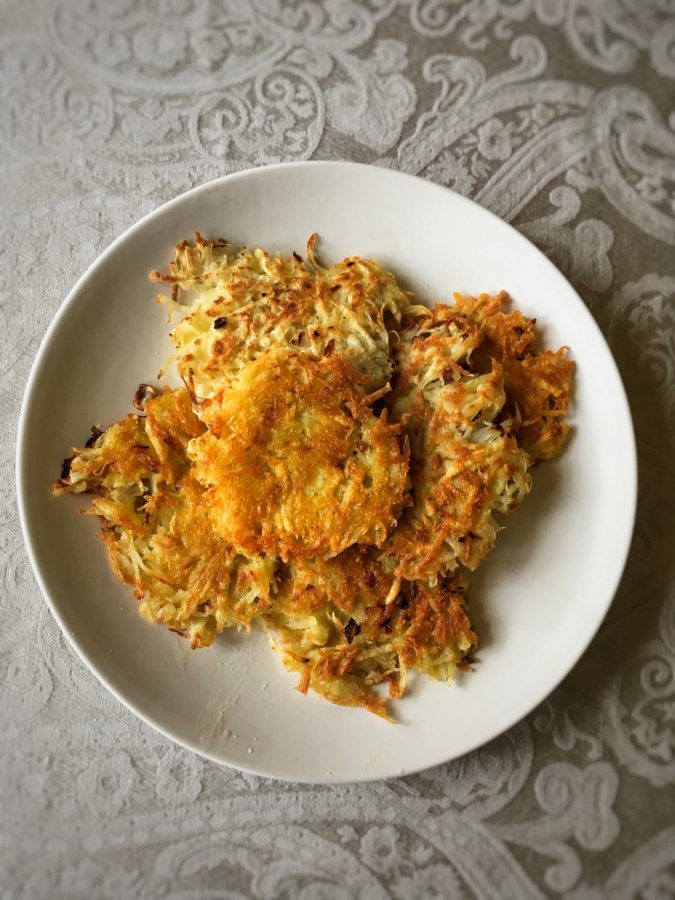Tastes to Celebrate
Photo Credit: Callie Rice
Shredded potatoes are mixed with onions and two eggs, then fried to get a nice, crispy latke. Serve with sour cream or applesauce for the true flavor of Hanukkah.
December 12, 2018
Special occasions call for special food. You have your popcorn chicken or meatball sliders at tailgates, cake and ice cream to celebrate birthdays, and pizza to reward yourself for getting through another hectic week. You could say food brings just as much joy as presents or the winning score.
Food holds significance in the way it’s prepared, the way it’s presented, and especially the circumstance in which it’s eaten. Celebrating good fortunes with food is a common theme amongst different cultures, especially during the holidays.
Christmas celebrates the birth of Christ, but has now evolved into a holiday spending time with family, giving and receiving presents, and spreading joy. Samantha Jamison, a sophomore at Boise High, shares her traditions for her Christmas feast.
“Typically… we make a beef roast and a variety of sides.” Jamison explained. She also helps out in the kitchen by making dessert – apple or pumpkin pie being her favorite.
Not only do they taste delicious, but “…there’s a good pay off..after you put the effort in,” Jamison said. Other students say their family’s special dishes include a variety of casseroles, ham roasts, and seafood.
For Hanukkah, potato latkes, usually paired with applesauce or sour cream, are significant in the way they are prepared. Fried in oil, they symbolizeing the miracle of the menorah oil burning for eight days. However, latkes also emphasize the importance of working hard without the reliance on miracles. Other foods prepared for Hanukkah include kugel, a casserole made from eggs, noodle, and potato, and jelly donuts.
In Japan, Omisoka is celebrated on the last day of the year as another form of New Year’s Eve. Osechi Ryori, a bento-box-like assortment of meats, vegetables, noodles and spices, is considered the most important meal of the year, as it ensures best wishes for the upcoming year. Among the layers of food, kuri kinton – or candied chestnut sweet potatoes – serves as a hope for exceptional economic wealth. Simmered shrimp, chicken, and vegetables are also included in an Osechi Ryori meal.
Starting on December 26th and lasting until the first day of the new year, Kwanzaa celebrates African American heritage. “Kwanzaa” is the Swahili word for “first,” referring to the first harvests of the year. The creole style of preparing food originated in Africa, and was brought over during the 19th century, along with crops including wheat, barely, okra, ginger, and beans. African gumbo is a traditional dish of this style, consisting of cooked meat (chicken is commonly used) garlic, onion, celery, and simmered okra, all spread over rice.
It doesn’t matter what religion you follow, or who or what or where you celebrate. As Jamison said, “[food] brings people together.” Regardless of the occasion, food symbolizes unity, luck, good fortune for loved ones in your life, and happiness on the road ahead.


